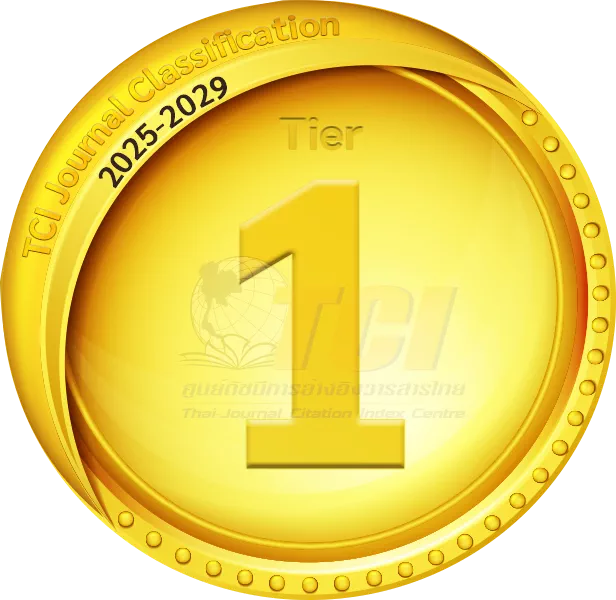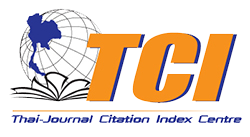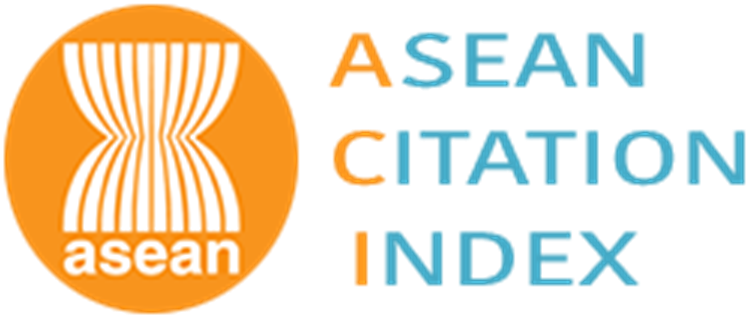การพัฒนา Web-based GIS สำหรับวิเคราะห์และประเมินผลกระทบจากแผ่นดินไหว
The Development of web-based GIS for Earthquakes Analysis and Evaluation
Abstract
งานวิจัยนี้มีวัตถุประสงค์ คือ 1) เพื่อศึกษารอยเลื่อนในจังหวัดเชียงใหม่และหาระดับความเสี่ยงเมื่อเกิดเหตุแผ่นดินไหว 2) เพื่อจัดทำเว็บแอปพลิเคชันแสดงความเสี่ยงและผลกระทบของแนวรอยเลื่อนในจังหวัดเชียงใหม่ ข้อมูลที่ใช้ประกอบไปด้วยฐานข้อมูลเชิงพื้นที่ของแนวรอยเลื่อนมีพลังและตำแหน่งหมู่บ้าน รวมทั้งสถิติการเกิดแผ่นดินไหวย้อนหลังในจังหวัดเชียงใหม่ โดยการวิเคราะห์ระดับความเสี่ยงเมื่อเกิดเหตุแผ่นดินไหวใช้ระยะ 1–10 กิโลเมตร เพื่อวิเคราะห์หาจำนวนหมู่บ้านที่จะได้รับผลกระทบมากที่สุดเมื่อเกิดแผ่นดินไหว รวมทั้งจัดทำเว็บแอปพลิเคชันเพื่อแสดงความเสี่ยง โดยแสดงแนวรอยเลื่อนมีพลัง หมู่บ้านตามแนวรอยเลื่อนมีพลัง และระบุตำแหน่งของผู้ใช้งานได้ โดยใช้ภาษา HTML, Java Script และ CSS เพื่อพัฒนาเว็บแอปพลิเคชัน จากผลการศึกษาพบว่า รอยเลื่อนมีพลังที่พาดผ่านในจังหวัดเชียงใหม่มีทั้งหมดสี่รอยเลื่อน ซึ่งหมู่บ้านที่อยู่ห่างจากแนวรอยเลื่อนแม่ทาในระยะหนึ่งกิโลเมตรจะได้รับผลกระทบมากที่สุด การแสดงผลของเว็บแอปพลิเคชันทำให้ผู้ใช้งานทราบตำแหน่งรอยเลื่อน หมู่บ้านที่อยู่ใกล้แนวรอยเลื่อน รวมถึงการออกแบบให้สามารถตอบสนองต่อผู้ใช้งานเมื่อคลิก ณ ตำแหน่งต่าง ๆ ตามระยะทาง 1–10 กิโลเมตร จำลองการเกิดแผ่นดินไหว เพื่อดูรายชื่อหมู่บ้านที่อยู่ในระยะห่างดังกล่าวได้ทันที ข้อมูลที่ได้จากเว็บแอปพลิเคชันสามารถใช้สนับสนุนการตัดสินใจ วางแผนรับมือความเสียหายที่เกิดขึ้นจากแผ่นดินไหวได้อย่างทันเวลาและมีประสิทธิภาพ
The objectives of the study were 1) to study faults in Chiang Mai and determine the level of earthquake risk, and 2) to create a web application showing the impact of each fault in Chiang Mai. The information used in the study includes a spatial database of active faults, the location of villages, and historical earthquake statistics in Chiang Mai. By analyzing the level of earthquake risk, the study considers distances of 1–10 kilometers to determine the number of villages that would be most affected in the event of an earthquake. HTML, JavaScript, and CSS were used to develop the web application. The results found that there are four active faults across Chiang Mai, with villages located within one kilometer of the fault lines being the focus of the study. The Mae Tha fault was identified as having the maximum impact. The advantage of the web application is its real-time interaction. When users click on locations to simulate earthquakes along distances of 1–10 kilometers from the fault lines, the list of affected villages within this distance is shown on the web map. The utilization of this study supports real- time decision-making to reduce earthquake risks.
Keywords
[1] S. Soralump. Earthquake. 70 years of engineering excellence, n.d. [Online] (in Thai). Available: https://www.gerd.eng.ku.ac.th/Paper/Paper_ Other/Soralump/แผ่่นดิ ินไหว_บทความ70ปีี คณะฯ.pdf
[2] Chiang Mai Governor Office. (2022) Provincial development plan (2023-2027). [Online] (in Thai). Available: https://www.chiangmai.go. th/managing/public/D2/2D24Aug2022155450. pdf
[3] Department of Mineral Resources. (2020). The characteristics of the 16 Active fault. [Online] (in Thai). Available: https://www.dmr.go.th
[4] Thai PBS. (2023). “LINE ALERT” friends on the disaster alert line – earthquake immediately. [Online] (in Thai). Available: https://www. thaipbs.or.th/news/content/328937
[5] Earthquake Observation Division. (2024). Earthquakes in Mae Khue, Doi Saket, Chiang Mai. [Online] (in Thai). Available: https://earthquake. tmd.go.th/announce.html?pageNum_ann= 1&totalRows_ann=275
[6] B. Li, J. Wu, M. Pan, and J. Huang, “Application of 3D WebGIS and real-time technique in earthquake information publishing and visualization,” Earthquake Science, vol. 28, no. 3, pp. 223–231, 2015.
[7] T. Osaragi, I. Niwa, and N. Hirokawa, “Development of web application for disaster-information collection and its demonstration experiment,” in Advances and New Trends in Environmental Informatics: Stability, Continuity, Innovation, V. Wohlgemuth, F. Fuchs-Kittowski and J. Wittmann, Eds., Switzerland: Springer International, 2017, pp. 63–73.
[8] J. Kamusiime, V. K. Jishnu, and G. Remya, “Web Application for Disaster Management,” International Journal of Advanced Research in Computer and Communication Engineering, vol. 8, no. 2, pp. 293–296, 2019.
[9] 1stCraft Team. (2020). What Web application? How is it different from general websites?. [Online] (in Thai). Available: http://https:// 1stcraft.com/website-application-vs-generalwebsite/
[10] ISM Technology Recruitment. (2022). The Difference Between FRONT-END, BACK-END and MIDDLEWARE DEVELOPERS. [Online] (in Thai).Available: https://www.ismtech. net/th/it-topics-trends-th/differencebetween- front-end-back-end-and-middlewaredevelopers/
[11] Risk Management Center. (2018). Earthquake Disaster. [Online] (in Thai). Available: https:// op.mahidol.ac.th/rm/2018/3682
[12] Department Of Mineral Resources. Earth quake Severity. [Online] (in Thai). Available: https:// www.dmr.go.th
[13] Thai Meteorologcal Department. (2022). Earthquakes. [Online] (in Thai). Available: https://tmd-dev.azurewebsites.net/info/แผ่่น ดิินไหว
[14] Earthquake Observation Division. (2014). Earthquakes in Chiang Rai. [Online] (in Thai). Available: https://earthquake.tmd.go.th/ documents/file/seismo-doc-1422078516. pdf
[15] Earthquake Observation Division. (2024) Today's Earthquakes in Myanmar. [Online] (in Thai). Available: https://earthquake.tmd.go.th/insideinfo. html?earthquake=11651
DOI: 10.14416/j.kmutnb.2024.10.015
ISSN: 2985-2145





